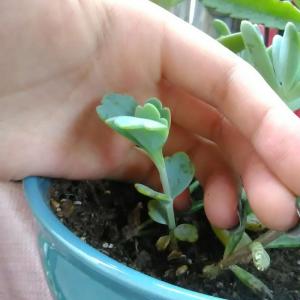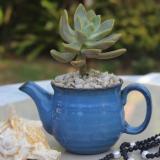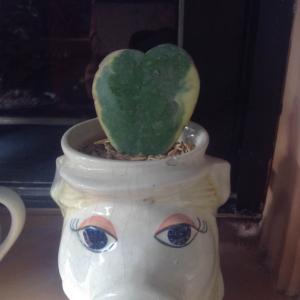文章
Dummer. ゛☀
2017年08月10日

The variegated pineapple plant is grown for its foliage, not for its fruit. The gorgeous bright red, green and cream striped leaves are held rigidly off a low stem. Their bright fruit is attractive but rather bitter. The plants make lovely and interesting houseplants, or warm season potted outdoor plants. The pineapple flowering houseplant is a bromeliad and requires similar care. Care for the variegated pineapple is the same as an edible pineapple, but don’t expect fruiting overnight. Both types can take up to five years to produce fruit.
Pineapple Bromeliad Varieties
Bromeliads are a family of sometimes stemless, sometimes epiphytic plants. They may also be grown in an almost soil-free environment made up of other materials such as sand, peat and bark. Bromeliads are common in warm areas with high humidity. There are hundreds of varieties of pineapple. Not all of them produce a yellow fleshed fruit armored in green. There are also red and blue varieties. The best pineapple bromeliad varieties for home growers are the miniature types. These plants are easier to keep to container size, so you can move them in and protect them in case of freezing weather.
Variegated Pineapple Plant
Pineapples are only hardy in USDA zones 10 to 11. These warm season plants can be grown inside as striking houseplants. The variegated form is colorful and lively, well suited for a partially sunny room. Growing variegated pineapples in full sun is not recommended as the best color comes in lower light areas. The plant is a novelty plant and not as easy to find as the regular pineapple bromeliad varieties. Mature plants can produce a flower within a year of planting. To start your own pineapple flowering houseplant, harvest a fruit and cut the top off. Let the top dry on the counter for a day or two. Plant the base in a mixture of orchid bark and sand that is lightly moist. Keep somewhat moist until the top roots, taking care not to overwater, which will make the fruit top rot. You can also remove any offsets and plant them. Let these root and you will soon be growing variegated pineapples to share with friends and family.
Care for Variegated Pineapple
Pineapples require medium light, soil low in organic amendments and moderate moisture. The plant can tolerate short periods of drought with no ill effects. They can be prone to several pests, including aphids, whitefly and scale. Rinse off soft bodied pests and use a horticultural soap to combat the others. Fertilize every two weeks in spring until dormancy in fall. Use a diluted liquid plant fertilizer. Water thoroughly each time, but allow the surface of the soil to dry out before applying more water. Variegated pineapple plant must be kept where temperatures are between 65 and 82 F. (50 and 28 C.) with high humidity for best growth. Mimic the growing conditions of a Hawaiian island and you are guaranteed success with your pineapple flowering houseplant!

Pineapple Bromeliad Varieties
Bromeliads are a family of sometimes stemless, sometimes epiphytic plants. They may also be grown in an almost soil-free environment made up of other materials such as sand, peat and bark. Bromeliads are common in warm areas with high humidity. There are hundreds of varieties of pineapple. Not all of them produce a yellow fleshed fruit armored in green. There are also red and blue varieties. The best pineapple bromeliad varieties for home growers are the miniature types. These plants are easier to keep to container size, so you can move them in and protect them in case of freezing weather.

Variegated Pineapple Plant
Pineapples are only hardy in USDA zones 10 to 11. These warm season plants can be grown inside as striking houseplants. The variegated form is colorful and lively, well suited for a partially sunny room. Growing variegated pineapples in full sun is not recommended as the best color comes in lower light areas. The plant is a novelty plant and not as easy to find as the regular pineapple bromeliad varieties. Mature plants can produce a flower within a year of planting. To start your own pineapple flowering houseplant, harvest a fruit and cut the top off. Let the top dry on the counter for a day or two. Plant the base in a mixture of orchid bark and sand that is lightly moist. Keep somewhat moist until the top roots, taking care not to overwater, which will make the fruit top rot. You can also remove any offsets and plant them. Let these root and you will soon be growing variegated pineapples to share with friends and family.

Care for Variegated Pineapple
Pineapples require medium light, soil low in organic amendments and moderate moisture. The plant can tolerate short periods of drought with no ill effects. They can be prone to several pests, including aphids, whitefly and scale. Rinse off soft bodied pests and use a horticultural soap to combat the others. Fertilize every two weeks in spring until dormancy in fall. Use a diluted liquid plant fertilizer. Water thoroughly each time, but allow the surface of the soil to dry out before applying more water. Variegated pineapple plant must be kept where temperatures are between 65 and 82 F. (50 and 28 C.) with high humidity for best growth. Mimic the growing conditions of a Hawaiian island and you are guaranteed success with your pineapple flowering houseplant!
0
0
文章
Dummer. ゛☀
2017年08月06日

BOTANICAL NAME: Aloe barbadensis
PLANT TYPE: Houseplant
SUN EXPOSURE: Part Sun
FLOWER COLOR: RedYellow
The Aloe Vera plant is an attractive succulent with thick, variegated leaves that fan out from its center base. Aloe vera plants are easy to keep and useful, too, as the juice from their leaves will relieve pain from scrapes and burns when applied topically. Keep the aloe vera plant in a pot near a kitchen window for everyday use.
PLANTING
Plant in wide containers with a well-draining potting mix, such as those made for cacti and succulents. Aloe vera plants are hardy, but a lack of proper drainage can cause rot and wilting.
Place in indirect sunlight or artificial light.
CARE
Water aloe deeply, but in order to discourage rot, allow the soil to dry at least 1 to 2 inches deep between waterings. Water even less often in winter.
Aloe vera plants produce offsets—also known as plantlets or “babies”—that can be removed to produce an entirely new plant.
Knock your aloe vera out of its pot and find where the offsets are attached. Sever them from the mother plant with a knife. Allow the cuts on the offsets and the mother plant to callus over for a day or two, then pot them in a standard potting mix. Put in a sunny location. Wait a week to water and keep the soil on the dry side.
PESTS/DISEASES
Aloe vera plants are susceptible to common garden pests, such as mealybugs and scale.
Some common diseases are root rot, soft rot, fungal stem, and leaf rot. Avoid overwatering to prevent these conditions from developing.
PLANT TYPE: Houseplant
SUN EXPOSURE: Part Sun
FLOWER COLOR: RedYellow
The Aloe Vera plant is an attractive succulent with thick, variegated leaves that fan out from its center base. Aloe vera plants are easy to keep and useful, too, as the juice from their leaves will relieve pain from scrapes and burns when applied topically. Keep the aloe vera plant in a pot near a kitchen window for everyday use.

PLANTING
Plant in wide containers with a well-draining potting mix, such as those made for cacti and succulents. Aloe vera plants are hardy, but a lack of proper drainage can cause rot and wilting.
Place in indirect sunlight or artificial light.

CARE
Water aloe deeply, but in order to discourage rot, allow the soil to dry at least 1 to 2 inches deep between waterings. Water even less often in winter.
Aloe vera plants produce offsets—also known as plantlets or “babies”—that can be removed to produce an entirely new plant.
Knock your aloe vera out of its pot and find where the offsets are attached. Sever them from the mother plant with a knife. Allow the cuts on the offsets and the mother plant to callus over for a day or two, then pot them in a standard potting mix. Put in a sunny location. Wait a week to water and keep the soil on the dry side.

PESTS/DISEASES
Aloe vera plants are susceptible to common garden pests, such as mealybugs and scale.
Some common diseases are root rot, soft rot, fungal stem, and leaf rot. Avoid overwatering to prevent these conditions from developing.
5
6
成长记
Josh Weesner
2017年06月26日

I new added a "Kalanchoe fedtschenkoi "variegata" - Variegated Lavender Scallops" in my "garden"


1
0
成长记
Josh Weesner
2017年06月25日

I new added a "Variegated Elephant Bush - Portulacaria afra "variegata"" in my "garden"


0
0
成长记
Josh Weesner
2017年06月25日

I new added a "Variegated Jade Plant - Crassula obstacle "variegata"" in my "garden"


0
0
成长记
Kittiemeu
2017年06月20日

I new added a "Variegated Elephant Bush (Portulacaria Agra)" in my "garden"
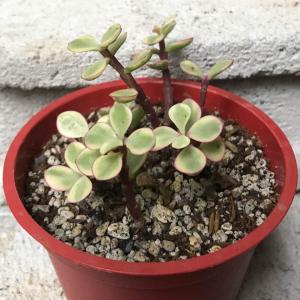

0
0
成长记
lindseyveenhuis
2017年02月14日

I new added a "variegated spider plant" in my "garden"
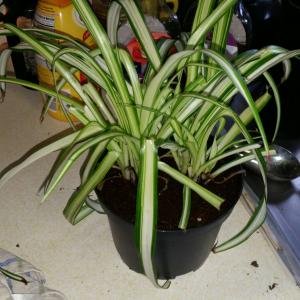

0
0
cihat:SLM




